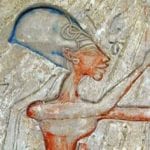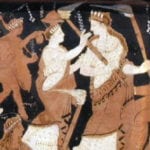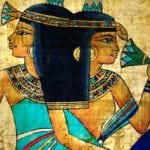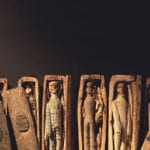 Mysteries
Mysteries  Mysteries
Mysteries  History
History 10 Surprising Stories About the Texas Rangers
 Humans
Humans 10 Philosophers Who Were Driven Mad by Their Own Theories
 Miscellaneous
Miscellaneous 10 Video-Game-Worthy Weapons and Armors from History
 Weird Stuff
Weird Stuff 10 Psychics Who Accurately Predicted Wartime Events
 The Arts
The Arts 10 Pieces of Art Inspired by a Broken Heart
 Health
Health 10 Science Fiction-Sounding New Medical Treatments
 History
History 10 Surprising Facts About the Father of Submarine Warfare
 Space
Space Ten Astonishing New Insights into Alien Worlds
 Weird Stuff
Weird Stuff 10 Bizarre Summer Solstice Rituals Still Practiced Today
 Mysteries
Mysteries Top 10 Haunting Facts About the Ghost Ship MV Alta
 History
History 10 Surprising Stories About the Texas Rangers
 Humans
Humans 10 Philosophers Who Were Driven Mad by Their Own Theories
Who's Behind Listverse?

Jamie Frater
Head Editor
Jamie founded Listverse due to an insatiable desire to share fascinating, obscure, and bizarre facts. He has been a guest speaker on numerous national radio and television stations and is a five time published author.
More About Us Miscellaneous
Miscellaneous 10 Video-Game-Worthy Weapons and Armors from History
 Weird Stuff
Weird Stuff 10 Psychics Who Accurately Predicted Wartime Events
 The Arts
The Arts 10 Pieces of Art Inspired by a Broken Heart
 Health
Health 10 Science Fiction-Sounding New Medical Treatments
 History
History 10 Surprising Facts About the Father of Submarine Warfare
 Space
Space Ten Astonishing New Insights into Alien Worlds
 Weird Stuff
Weird Stuff 10 Bizarre Summer Solstice Rituals Still Practiced Today
10 Unsolved Mysteries Of Ancient Egypt
Ancient Egypt has fascinated the imagination since we first cleaned the sands away from the Great Sphinx. For the past two centuries, it has been an obsession for archaeologists and historians. It is a land whose mysteries we have spent years slowly unraveling.
Even after all this time, though, there is still a great deal we don’t know. Some of the biggest discoveries of the ancient world still lie covered under the sands of Egypt, waiting to be revealed. More often than not, such revelations only yield yet more mysteries and unanswered questions.
10 The Lost Labyrinth Of Egypt

2,500 years ago, there was a massive labyrinth in Egypt that, in the words of one who saw it, “surpass[ed] even the pyramids.”
It was a massive building, two stories tall. Inside, there were an unbelievable 3,000 different rooms, all connected through a winding maze of passages so complex that nobody could find their way out without a guide. At the bottom, there was underground level that served as a tomb for kings, and at the top was a massive roof made out of a single gigantic stone.
Countless ancient writers described having seen it firsthand, but 2,500 years later, we still aren’t sure where it is. The closest thing we’ve found to it is a massive 300-meter-wide (1,000 ft) stone plateau that some believe was once the foundation of the labyrinth. If it is, though, the top stories have been completely lost to time.
In 2008, a team of geo-radar specialists scanned the plateau and found that underneath, there appears to an underground labyrinth just like the one ancient writers described.[1] As of yet, though, nobody has ever excavated it or stepped inside. Until somebody makes it into the labyrinth, we won’t know for sure whether we’ve really found Egypt’s greatest archaeological wonder.
9 The Unknown Queen Of Egypt
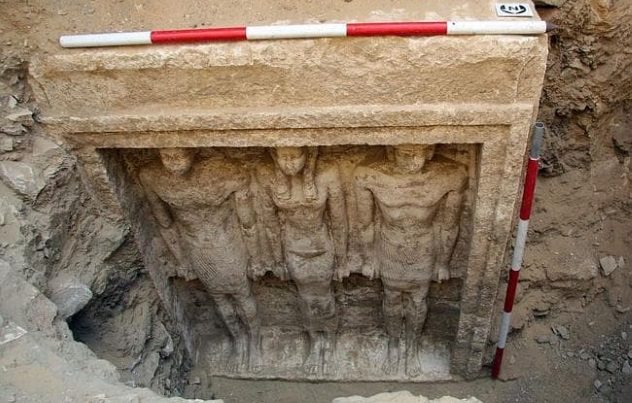
In 2015, archaeologists stumbled upon the tomb of a woman who was buried among the great pyramids of the Old Kingdom of Egypt. In her tomb were inscriptions calling her both “the wife of the king” and “the mother of the king.”[2]
4,500 years ago, when this woman was alive, she would have been one of the most important people on the planet. She would have had greater power than any other woman in the nation. And nobody has any idea who she is.
Historians have dubbed her “Khentakawess III,” under the assumption that she was the daughter of Queen Kehntakawess II. They believe she may have been the wife of Pharaoh Neferefre and the mother of Pharaoh Mekahur—but they don’t really know. They’re just guessing.
If her name was Khentakawess III, then there are no references to her whatsoever in anything we’ve ever found. Whoever she was, she was once an incredibly powerful woman, but today, she is little more than an enigma.
8 The Sphinx Of Israel
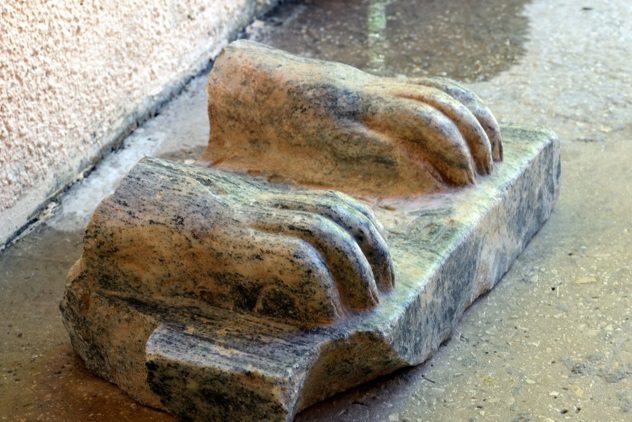
In 2013 in Tel Hazor, Israel, archaeologists found something they’d never expected to find so far away from Egypt: a 4,000-year-old Egyptian sphinx.[3]
Specifically, they found the paws of the statue, resting on a base. The rest of it, it’s believed, was deliberately destroyed thousands of years ago. Before somebody toppled it over, though, it would have been 1 meter (3.3 ft) tall and weighed half a ton.
Nobody knows what an Egyptian statue was doing in Israel. The only clue left behind is an inscription on the base that bears the name “King Mycerinus,” the name of a pharaoh who ruled over Egypt around 2500 BC.
It’s highly unlikely that Tel Hazor was conquered by the Egyptians. During the reign of Mycerinus (aka Menkaure), Tel Hazor was a trading hub in Canaan, directly between Egypt and Babylon. It was vital to the economic well-being of two of the biggest powers in the area.
Our best guess is that it was a gift. If it was a gift, though, it’s not clear why King Mycerinus sent it—or, for that matter, why anyone got angry enough to shatter it. All we really know for sure is that for some reason, somebody built a sphinx 1,000 kilometers (600 mi) away from the Great Sphinx of Giza.
7 The Mysterious Death Of King Tut
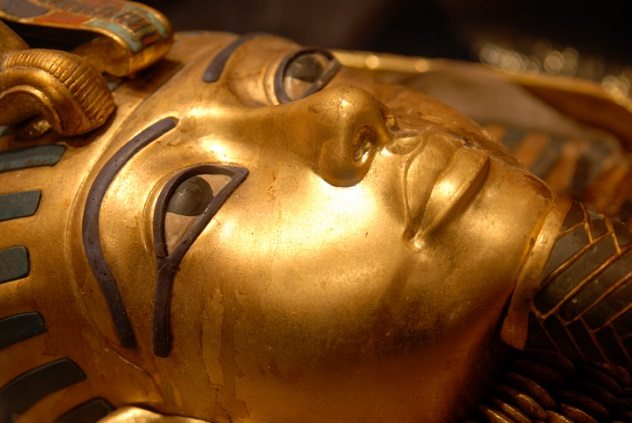
King Tutankhamun was only 19 years old when he died, and nobody knows for sure what happened. His death is a complete mystery—but not because he was in the prime of his life. The reason that Tut’s death is such a mystery is that there were so many things wrong with him that it’s hard to tell which one finished him off.
King Tut was in terrible health. He had malaria, for one thing, and he was born with so many genetic disabilities that historians are convinced his parents must have been brother and sister. He had a club foot and genetic defects that, some believe, may have made his death nothing more than a matter of time.
He also had a fractured skull that, for a long time, was thought by archaeologists to be a sign that he’d been stabbed in the head. Today, it’s believed that his head just got damaged while his body was being embalmed, but the possibility that he was murdered hasn’t been ruled out.
He broke his knee shortly before he died, too, which has lead to a theory that he was killed in a chariot accident. If he was, though, getting on that chariot in the first place was a strange decision. Tut was so deformed that he couldn’t even stand without someone propping him up.[4]
It could have been anything, or it could have been a whole slew of different things affecting him at once. The only thing we know for sure is that King Tut didn’t get a lot of good news in his last month alive.
6 The Hidden Chamber Of The Great Pyramid
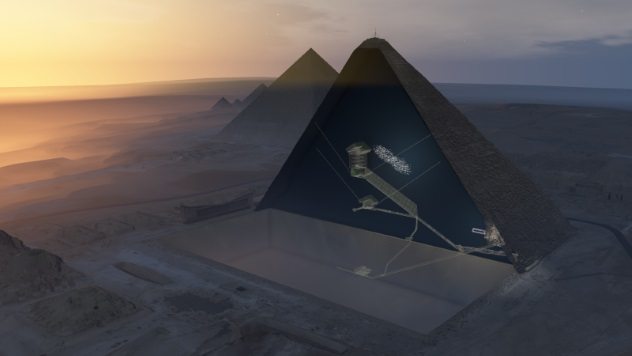
The greatest pyramid of them all was built 4,500 years ago for Pharaoh Khufu. It is massive structure almost 150 meters (490 ft) tall, built with more than 2.3 million stone blocks. And yet, up until recently, there only seemed to be three chambers inside.
If that seems like a lot of wasted space for you, you’re not alone. That’s why a team scanned the pyramid in November 2017 to see if there was anything they missed. Sure enough, above the Great Gallery of the pyramid, they found signs that there might be a large hidden chamber as large as the biggest room in the whole pyramid.[5]
The strange thing is that the Egyptians deliberately built the hidden chamber to be completely inaccessible. There are no corridors or pathways connected to it. The only way they could have put anything inside is if they filled the chamber while they were building the pyramid, then sealed it up afterward.
We still haven’t seen the inside of the hidden chamber. But whatever is in there, Pharaoh Khufu apparently didn’t want it to ever see the light of day.
5 The Mummy Wrapped In A Foreign Book

In 1848, a man bought an ancient Egyptian mummy off of a shopkeeper in Alexandria. For years, he put it on display as a decoration, not realizing how strange of an artifact he’d found. After peeling off her bandages a few decades later, though, scientists found something very unusual. The mummy had been wrapped in the linen pages of a book—and it wasn’t written in Egyptian.[6]
It took years of investigation to figure out what language it was, but today we know that that it is written in Etruscan, the language of an ancient civilization that once lived in modern-day Italy. It’s a language we know little about. The words wrapped around this mummy make up the longest Etruscan text we’ve ever found.
There are still a lot of questions left unanswered, though. For one thing, we still don’t know what the text says. We can only understand a few words, which seem to be dates and the names of gods, and beyond that, we can only speculate as to what it means or why anyone would wrap it around a dead body.
Above all, we have no idea why an Etruscan book was wrapped around a mummy in Egypt. Was she Etruscan? If so, what was she doing in Egypt? And what did she put in her final message to the world?
4 The Dendera Light
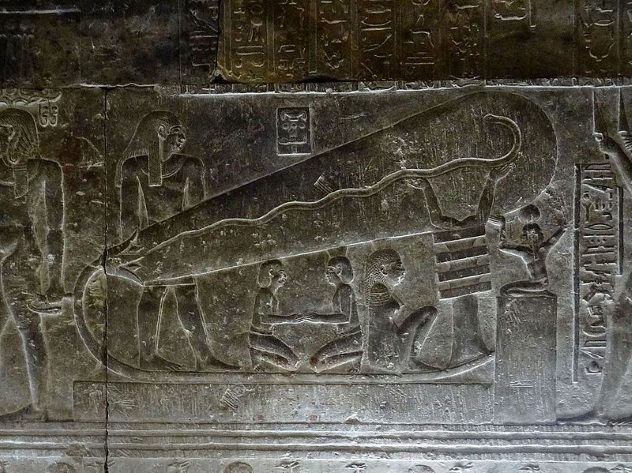
On the wall of a temple in Dendera, Egypt, there is a massive relief showing a very strange image. It shows, according to the usual interpretation, a snake in a big ball of fire flying out of a lotus flower while being held up by a pillar with human arms.
It’s a weird picture—but not just because the pillar has arms. It just happens to look exactly like a model of a Crookes tube, a type of early light bulb invented in the 19th century.[7] In fact, it looks like so much like a light bulb that some people think it just might be a diagram showing how to make one.
Admittedly, that’s the kind of theory you usually hear proposed by tall-haired madmen on the History Channel, but they have some eerily convincing arguments.
The room that shows the Dendera Light is the only room in the whole temple that didn’t have fire-burning lamps. Archaeologists have found residue that shows Egyptians burned lamps in every other part of the building except for this one. So if they didn’t have an early version of a light bulb stored in here, how did they see anything? And if the room was pitch black, why did they bother putting such an intricate image on the wall?
3 The Destroyed Pyramid
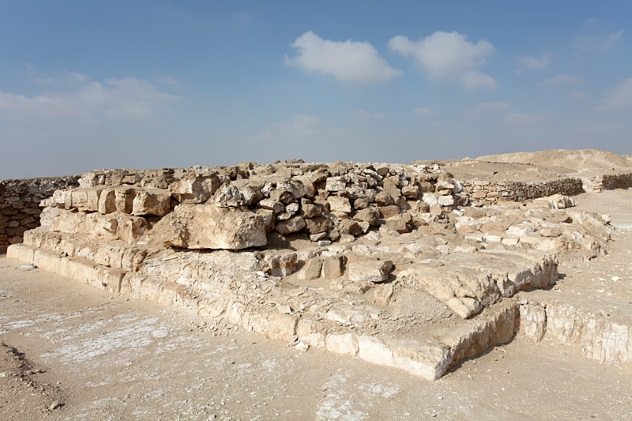
The Pyramid of Djedefre should have the highest point of any pyramid in Egypt. Djedefre made sure of it. He didn’t have the resources to build the biggest pyramid, but he used a little workaround to make sure the tip of his tomb was just a little bit taller than everybody’s else’s, anyway. He built it on a hill.
For some reason, though, while all the other pyramids of Egypt are still standing after thousands of years, Djedefre’s pyramid alone has been totally destroyed.[8] All that is left is the base.
Nobody’s entirely clear on what happened to it, but there are theories. Some think that Djedefre simply died before they were able to get much of the work done, and his pyramid was left in ruins. Others think that Romans quarried it for the stones 2,000 years ago, tearing down a massive historical monument. And still others think that the people of Egypt just really, really hated Djedefre—so much so that they were willing to pull apart an entire pyramid just out of spite.
2 The Disappearance Of Queen Nefertiti
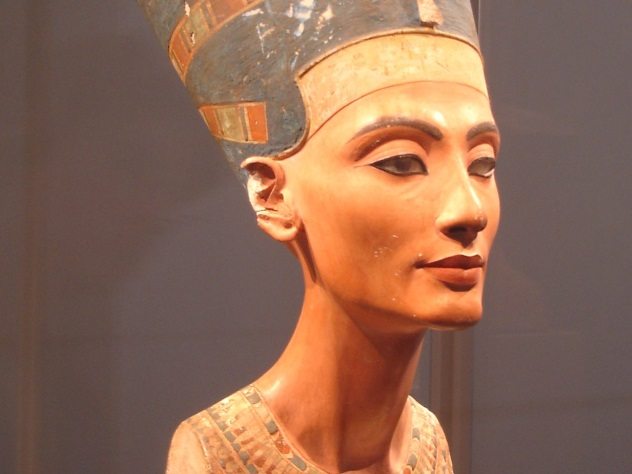
Queen Nefertiti is legendary for being one of the few women to rule over Egypt. She was the wife of Pharaoh Akhenaten, likely the mother of Pharaoh Tutankhamun, and is believed to have taken over Egypt and ruled in her own right. And yet, while the tombs of other pharaohs still tower over Egypt today, nobody has ever found Nefertiti’s final resting place.
The search for her tomb has gone on for years. Up until 2018, archaeologists were almost convinced that they’d found her burial place in a secret chamber hidden in King Tut’s tomb. In May, though, they meticulously scanned the wall and found that there was nothing there.
Curiously, there’s no mention of her death in Egyptian history, either. After about the 12th year of her husband Akhenaten’s reign, all mention of her stops altogether. Some believe this is because she became pharaoh and took on a different name—but not everybody agrees.
Some think that the answer to this mystery is a bit more mundane than we might hope. According to Dr. Joyce Tydseley, the simplest explanation is just that Nefertiti was never a pharaoh at all.[9] Dr. Tydseley believes that people made a big deal out of Nefertiti in the 1920s because a sculpture of her face became popular, and they just wanted her to be popular badly enough to believe it.
According to Dr. Tydseley, the explanation is simple. We don’t know what happened to Nefertiti because she just wasn’t that important of a person.
1 The Lost Land Of Punt
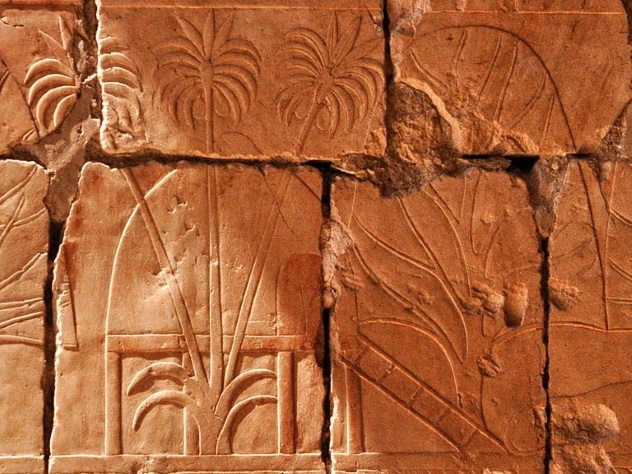
Ancient Egyptian writings are full of references to a place called Punt. It was an ancient African kingdom full of gold, ivory, and exotic animals that excited the Egyptians’ imaginations. And it must have been extremely powerful. It was a place that commanded the respect of the Egyptians, a land they had dubbed “God’s Land.”
There’s no question that Punt existed. There are countless mentions of it in ancient writings. There’s even a picture of the queen of Punt in an ancient Egyptian temple. But despite how powerful and important this place must have been, we’ve never found it.
The only traces we have of Punt are the artifacts the Egyptians kept. Scientists, desperate to figure out where this kingdom was, studied the mummified remains of two baboons that the Egyptians got from Punt and determined that the baboons, at least, had come from the area of modern-day Eritrea or Eastern Ethiopia.[10]
This, at least, gives us a starting point in the hunt to find Punt—but it’s a huge area for an archaeological search. And if we ever do find the ruins of the Kingdom of Punt, it’ll open up a whole new series of mysteries to solve to uncover our past.
Volumes have been written about ancient Egypt on Listverse. Read more on 10 Archaeological Finds That Shed New Light On Ancient Egypt and 10 Very Modern Controversies Surrounding Ancient Egypt.
